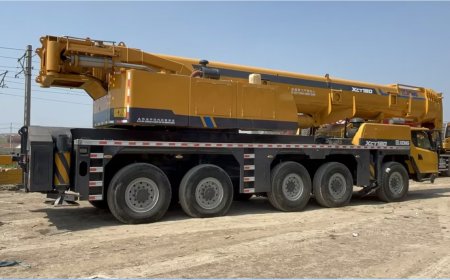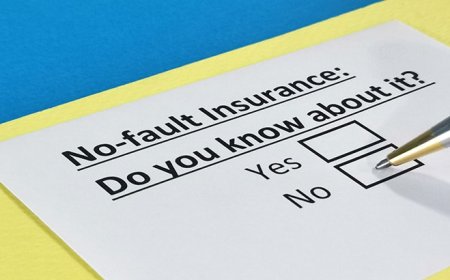How to find Memphis in May emergency procedures
How to Find Memphis in May Emergency Procedures Memphis in May is one of the most anticipated annual cultural festivals in the United States, drawing hundreds of thousands of visitors to downtown Memphis, Tennessee. Spanning over a month, the event features the Beale Street Music Festival, the World Championship Barbecue Cooking Contest, the Great American River Run, and the Sunset Symphony, among
How to Find Memphis in May Emergency Procedures
Memphis in May is one of the most anticipated annual cultural festivals in the United States, drawing hundreds of thousands of visitors to downtown Memphis, Tennessee. Spanning over a month, the event features the Beale Street Music Festival, the World Championship Barbecue Cooking Contest, the Great American River Run, and the Sunset Symphony, among other activities. With such massive attendance—often exceeding 500,000 people over the course of the festival—safety, preparedness, and access to emergency procedures become critical components of the experience for attendees, vendors, volunteers, and local residents alike.
Understanding how to find Memphis in May emergency procedures isn’t just a matter of convenience—it’s a necessity. Whether you’re a first-time visitor unfamiliar with the city layout, a vendor setting up a booth in a high-traffic zone, or a local resident navigating altered traffic patterns, knowing where to access real-time emergency information can make the difference between a minor inconvenience and a serious safety risk. This guide provides a comprehensive, step-by-step roadmap to locating, understanding, and utilizing emergency procedures during Memphis in May. By the end of this tutorial, you’ll have the knowledge and tools to respond confidently to any situation that may arise during the festival.
Step-by-Step Guide
1. Identify Official Emergency Communication Channels
The first step in finding emergency procedures is knowing where official information is published. Memphis in May is coordinated by a nonprofit organization in partnership with the City of Memphis, Memphis Police Department, Memphis Fire Department, and Shelby County Emergency Management Agency. These entities maintain centralized, authoritative sources of emergency information.
Start by visiting the official Memphis in May website: memphisinmay.org. Navigate to the “Safety & Emergency Information” section, typically found in the footer or under “Plan Your Visit.” This page is updated annually and contains links to emergency contacts, evacuation routes, shelter locations, and real-time alerts.
Additionally, monitor the City of Memphis’s official emergency portal at memphistn.gov/emergency. This site aggregates alerts from multiple city agencies and is synchronized with the National Weather Service and state emergency systems. Bookmark this page and enable browser notifications if available.
2. Download Official Mobile Applications
Mobile access to emergency information is essential during large-scale events. The City of Memphis offers the “Memphis 311” app, available on iOS and Android. This app allows users to report non-emergency issues (like downed signs or blocked walkways) and receive push notifications about road closures, weather hazards, or active incidents near festival zones.
For emergency-only alerts, download the “Shelby County Emergency Alerts” app. This tool uses geolocation to deliver targeted messages based on your current location. During Memphis in May, it will notify you of:
- Immediate threats (e.g., severe weather, active shooter situations)
- Evacuation orders for specific zones
- Changes to public transit schedules
- Medical aid station locations
Enable location services and sound alerts within the app settings. Test the notification system before the festival begins to ensure it’s functioning.
3. Locate Physical Emergency Information Stations
While digital tools are critical, physical signage and manned stations remain vital during events with high foot traffic and potential connectivity issues. During Memphis in May, emergency information kiosks are strategically placed at:
- Each major festival entrance (Beale Street, Tom Lee Park, AutoZone Park)
- Public transit hubs (MATA stations near the festival corridor)
- Designated rest areas and vendor zones
These kiosks feature large, laminated maps showing:
- Emergency exits from each venue
- Location of first aid stations (marked with a white cross on a green background)
- Police and fire response points
- Evacuation routes to designated assembly areas
Each kiosk also includes a QR code that links directly to the current emergency protocol document on the Memphis in May website. Scan this code with your smartphone to access a printable PDF version of the procedures.
4. Learn the Evacuation Protocol by Venue
Each Memphis in May event has a unique layout and therefore different evacuation procedures. Familiarize yourself with the protocols for the venues you plan to visit:
- Beale Street Music Festival: Evacuation routes lead to Main Street, Union Avenue, and the Mississippi Riverwalk. Avoid using the narrow alleys between venues during a mass exit. Follow directional signage and staff in high-visibility vests.
- Tom Lee Park (World Championship Barbecue Cooking Contest): The park has three primary exits: North (toward the river), East (via Riverside Drive), and West (via Madison Avenue). In case of flooding or severe weather, attendees are directed to the nearby Memphis Cook Convention Center, which serves as a designated shelter.
- AutoZone Park (Great American River Run): The stadium has multiple emergency exits on all sides. During the run, runners and spectators are advised to avoid the tunnel under the parkway and instead use the overpasses indicated by blue signs.
Each venue has a “Safety Ambassador” stationed near the main entrance. These individuals are trained in emergency response and can provide printed evacuation maps on request. Don’t hesitate to ask them for clarification.
5. Understand the Emergency Response Hierarchy
In any emergency, response follows a clear chain of command:
- First Responders: Police officers, firefighters, and EMTs on the ground. They are the first to act and will direct you to safety.
- Event Security Teams: Contracted personnel who manage crowd flow and report incidents to city responders. They do not make medical or evacuation decisions but relay information.
- Memphis in May Incident Command Center: Located at the Memphis Convention Center, this hub coordinates all emergency resources during the festival. It is not open to the public but issues public statements through official channels.
- City Emergency Operations Center: Located downtown, this is the city’s central command for large-scale incidents. It activates when multiple agencies are involved.
Remember: In an emergency, always follow the instructions of uniformed first responders. They have the authority and training to make life-saving decisions. Do not rely on unofficial sources, such as social media rumors or unverified text messages.
6. Identify and Mark Your Meeting Points
One of the most common issues during large events is people becoming separated from their group. Establish a clear meeting plan before entering any festival area.
Choose two meeting points:
- Primary Meeting Point: A visible landmark within the venue (e.g., the giant barbecue grill at Tom Lee Park, the statue of B.B. King on Beale Street).
- Secondary Meeting Point: An exit point outside the venue (e.g., the corner of Beale and 2nd Street, the MATA bus stop on Riverside Drive).
Share these locations with everyone in your group. Write them down or save them as contacts in your phone. In case of a full evacuation, your secondary point becomes your new rendezvous.
7. Practice Scenario-Based Preparedness
Before attending, simulate potential emergency scenarios:
- What if your phone dies and you can’t access the app?
- What if you’re separated from your group during a sudden downpour?
- What if you witness someone collapse?
For each scenario, rehearse your response:
- Always carry a physical copy of the emergency map.
- Know the location of the nearest first aid station (they’re marked on every map).
- If someone collapses, do not move them unless they’re in immediate danger. Call for help using the nearest emergency phone or ask a staff member to notify security.
Practicing these responses reduces panic and increases your ability to act decisively under pressure.
Best Practices
1. Always Carry a Physical Emergency Kit
Digital tools can fail. Batteries die. Networks overload. That’s why every attendee should carry a small, portable emergency kit. Include:
- A printed copy of the current year’s Memphis in May emergency procedures (download and print from memphisinmay.org)
- A small flashlight with extra batteries
- A whistle (to attract attention if trapped)
- A list of emergency contacts (family, local hospital, festival info line)
- Basic medications and a copy of prescriptions
- A portable phone charger (power bank)
Store this kit in a waterproof pouch and keep it in a consistent location—such as a front pocket or small backpack—that you can access quickly.
2. Dress for Emergencies, Not Just Comfort
Wearing appropriate clothing isn’t just about staying cool or dry—it’s about visibility and mobility.
- Avoid wearing dark clothing at night. Bright colors or reflective materials help first responders spot you in crowds or low-light conditions.
- Wear sturdy, closed-toe shoes. Sandals or heels can be hazardous on uneven surfaces, wet pavement, or during evacuations.
- Carry a light rain jacket or poncho. Sudden thunderstorms are common in May and can trigger evacuations.
Remember: In an emergency, you may need to walk several blocks. Comfortable footwear is non-negotiable.
3. Stay Informed, Not Overwhelmed
It’s easy to fall into the trap of constantly checking your phone for updates. This can lead to information overload and distract you from your surroundings.
Best practice: Check official channels only once every 30–60 minutes unless an alert is active. Rely on your physical map and visual cues (signage, staff, crowd movement) for real-time situational awareness.
Use the “Do Not Disturb” mode on your phone with exceptions for Memphis 311 and Shelby County Emergency Alerts. This keeps you connected without being distracted.
4. Know Your Limits and When to Leave
Overcrowding, heat, and noise can cause stress, disorientation, or medical emergencies—even in healthy individuals. If you feel dizzy, nauseous, overly fatigued, or anxious, don’t wait for an official alert to act.
Find the nearest first aid station or ask a staff member for assistance. It’s better to leave early and return later than to risk a serious health incident.
Many attendees underestimate the physical toll of a full day at Memphis in May. Plan for breaks. Stay hydrated. Take shelter during peak heat hours (11 a.m.–3 p.m.).
5. Educate Your Group
Emergency preparedness is a group effort. Before arriving, hold a 5-minute briefing with everyone you’re attending with:
- Review the meeting points
- Assign roles (e.g., who carries the phone charger, who remembers the emergency map)
- Agree on a signal if you get separated (e.g., three quick whistle blows)
Children and elderly attendees may need extra attention. Assign a designated adult to stay with them at all times. Consider using a wristband with your contact information written clearly on it.
6. Avoid Common Misconceptions
Several myths circulate each year about Memphis in May emergencies:
- Myth: “The police will come to find you if you’re lost.” Reality: Police are focused on public safety and crowd control. They cannot search for individuals unless there’s a safety threat.
- Myth: “If it’s not raining, there’s no emergency.” Reality: Power outages, medical incidents, and security threats can occur regardless of weather.
- Myth: “I’ll just follow the crowd.” Reality: Crowds can panic and move in unpredictable directions. Always follow official signage and staff direction.
Debunking these myths helps you make rational, informed decisions during high-stress situations.
7. Report Suspicious Activity Immediately
If you see something unusual—a bag left unattended, someone taking photos of security points, or individuals acting aggressively—do not assume someone else will report it.
Use the Memphis 311 app to submit a report with a photo and location. Alternatively, find the nearest uniformed officer or event security personnel. Your report could prevent a serious incident.
Remember: “If you see something, say something” is not just a slogan—it’s a life-saving protocol.
Tools and Resources
1. Official Websites
- Memphis in May: memphisinmay.org — Primary source for event schedules, safety maps, and emergency protocols.
- City of Memphis Emergency Management: memphistn.gov/emergency — Real-time alerts, weather warnings, and shelter locations.
- Shelby County Emergency Alerts: shelbycountytn.gov/emergency — Geolocation-based notifications for county-wide incidents.
- MATA Public Transit: mata.org — Updated schedules and service advisories during festival weekends.
2. Mobile Applications
- Memphis 311: For reporting issues and receiving non-emergency alerts.
- Shelby County Emergency Alerts: For life-safety notifications via push and SMS.
- Red Cross Emergency App: Includes first aid guides, shelter locators, and disaster preparedness checklists.
- Google Maps (Offline Mode): Download the downtown Memphis area before the event. Works without cellular data.
3. Printed Materials
Each year, the Memphis in May organization distributes printed emergency guides at:
- All festival entrances
- Public libraries across Memphis
- Local hotels and visitor centers
Request a copy during your pre-festival visit to the Memphis Convention Center or the Memphis Public Library’s Main Branch. These booklets include:
- Full-color maps of all venues
- Emergency contact numbers
- First aid instructions
- Weather contingency plans
4. Social Media Monitoring Tools
While social media is not an official source, it can provide real-time situational awareness if used wisely.
Follow these verified accounts:
- @MemphisInMay (official)
- @MemphisPolice (official)
- @MemphisFire (official)
- @Memphis311 (official)
Use Twitter’s advanced search to filter for
MemphisInMay + #Emergency or #Safety. Avoid unverified accounts sharing rumors or unconfirmed photos.
5. Local Libraries and Community Centers
Memphis Public Library branches offer free Wi-Fi, printing services, and emergency preparedness workshops in the weeks leading up to the festival. Visit the Main Library or any branch to pick up printed materials or attend a 30-minute “Festival Safety Briefing” session.
6. Weather Monitoring Tools
Severe weather is the most common trigger for event disruptions. Use:
- NOAA Weather Radio (available as an app or standalone device)
- Weather.com with location pin set to downtown Memphis
- Windy.com for real-time wind, rain, and lightning overlays
Set alerts for “severe thunderstorm” and “flash flood” warnings in your area.
Real Examples
Example 1: 2022 Flash Flood at Tom Lee Park
During the 2022 Memphis in May festival, a sudden thunderstorm caused flash flooding along the Mississippi Riverbank near Tom Lee Park. Water levels rose rapidly, cutting off one of the main pedestrian pathways.
Emergency responders activated the shelter protocol within minutes. Attendees received push notifications via the Shelby County Emergency Alerts app. Staff directed crowds to the Memphis Cook Convention Center using pre-marked evacuation routes. No injuries occurred.
Key lessons:
- Geolocation alerts saved lives by reaching people before they could see the flood.
- Physical signage and staff presence prevented panic.
- Attendees who had printed maps were able to navigate safely even when their phones lost signal.
Example 2: Medical Emergency During Beale Street Music Festival
In 2021, a concertgoer suffered a seizure in the middle of a crowded area. A bystander immediately flagged a security guard. The guard activated the emergency response protocol, clearing a path to the nearest first aid station while another volunteer began CPR.
EMTs arrived within 4 minutes. The individual was transported to Regional One Health and made a full recovery.
Key lessons:
- Knowing the location of first aid stations is critical.
- Training bystanders to act—not wait—makes a difference.
- Clear communication between security and medical teams was seamless due to pre-event drills.
Example 3: Power Outage at Sunset Symphony
In 2023, a transformer failure caused a localized power outage during the Sunset Symphony. Lights went out, and the stage went silent.
Instead of chaos, staff activated pre-planned procedures: battery-powered lanterns were distributed, and volunteers guided attendees out in small groups using glow sticks and voice announcements. The event resumed within 45 minutes after backup generators were engaged.
Key lessons:
- Preparation for infrastructure failure is as important as weather planning.
- Non-digital communication (voice, visual signals) remains essential.
- Attendees who had flashlights or phone lights helped others navigate safely.
Example 4: Lost Child Recovery
A 6-year-old became separated from their family near the barbecue contest. A volunteer noticed the child wandering alone and brought them to the Family Reunion Station at the west exit. The child’s parents had already reported them missing through the Memphis 311 app. Within 12 minutes, they were reunited.
Key lessons:
- Always provide children with a contact wristband or card.
- Family Reunion Stations are strategically placed and staffed 24/7 during the festival.
- Reporting a missing person immediately through the app speeds up recovery.
FAQs
What should I do if I see an emergency but don’t have my phone?
Find the nearest staff member, security officer, or volunteer wearing a Memphis in May badge. They are trained to relay information to emergency responders. You can also locate one of the physical emergency kiosks and use the emergency phone mounted on it.
Are emergency procedures different for vendors and volunteers?
Yes. Vendors and volunteers receive specialized training and have access to internal emergency protocols through the Memphis in May portal. However, the public-facing procedures (evacuation routes, first aid locations, alert systems) are the same for everyone. Always follow the same steps as any attendee unless instructed otherwise by official staff.
What if I’m visiting with a disability?
Memphis in May provides accessible evacuation routes, designated assistance stations, and trained personnel to support attendees with mobility, sensory, or cognitive needs. Contact the Accessibility Services team via the website before the event to request personalized assistance. All emergency maps include ADA-compliant route indicators.
Do I need to register to receive emergency alerts?
For the Shelby County Emergency Alerts app, registration is required. For the Memphis 311 app, no registration is needed to receive alerts, but signing up allows you to report incidents and receive personalized updates. For website alerts, subscribe to the newsletter on memphisinmay.org.
Can I use social media to report an emergency?
Do not use social media to report life-threatening emergencies. Use the Memphis 311 app or find a uniformed officer. Social media is useful for sharing updates after the fact, but not for initiating a response.
What happens if the festival is canceled due to an emergency?
If an event is canceled or suspended, official notifications will be posted on the Memphis in May website, the Memphis 311 app, and local news outlets. Do not rely on word-of-mouth. Follow instructions for safe exit and transportation. Parking and transit services will remain available for orderly departure.
Are pets allowed during emergencies?
Pets are not permitted in festival venues except for certified service animals. In an emergency, service animals are allowed to accompany their handlers. If you have a pet, leave it at home or in a secure, climate-controlled location. Emergency shelters do not accept pets.
How often are emergency procedures updated?
Emergency procedures are reviewed and updated annually by the Memphis in May Safety Committee in coordination with city agencies. Changes are published on the website by mid-April each year. Always use the most current version.
Conclusion
Finding and understanding Memphis in May emergency procedures is not a one-time task—it’s an ongoing responsibility that ensures your safety and the safety of others. The festival is a celebration of music, food, culture, and community, and those values extend to how we care for one another during moments of crisis.
By following the steps outlined in this guide—identifying official channels, downloading essential apps, learning evacuation routes, carrying physical tools, and practicing preparedness—you transform from a passive attendee into an informed, capable participant in the festival’s safety ecosystem.
Remember: Emergencies are rare, but preparation is never excessive. The tools and knowledge you gain from this guide will serve you far beyond Memphis in May. Whether you’re attending a large event in another city, navigating a natural disaster, or simply helping a stranger in need, the habits you build here will make you a more resilient, aware, and compassionate member of any community.
Before you head to the festival this year, take five minutes to download the apps, print the map, and talk to your group about what to do if something goes wrong. That small act of preparation could be the difference between a story you tell for years—and one you’d rather forget.
Stay safe. Stay informed. And enjoy Memphis in May—to the fullest, and with confidence.


















